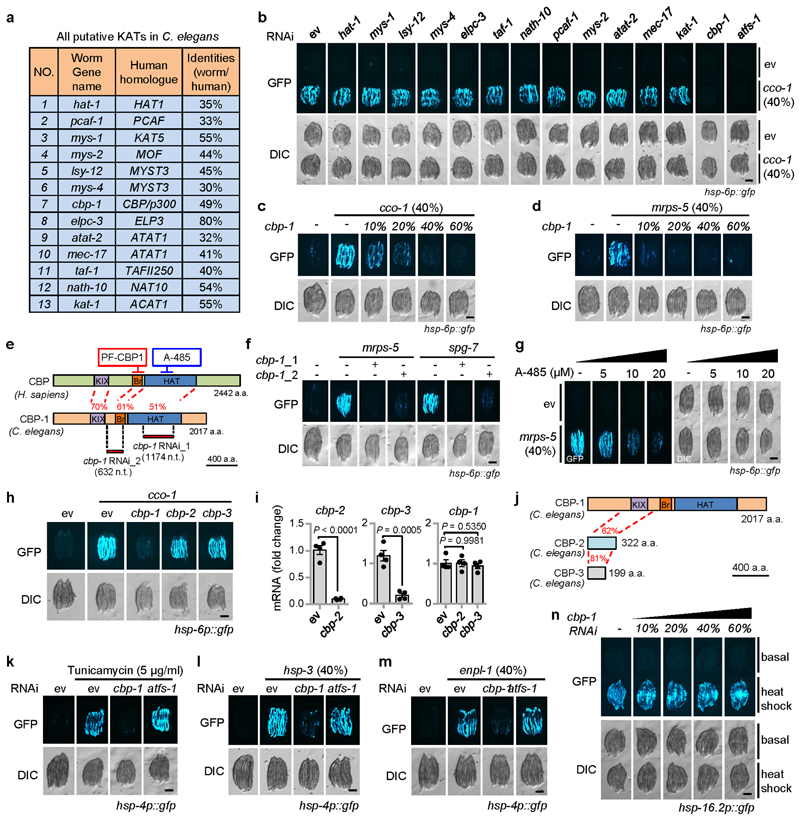Extended Data Fig. 1. Inhibition of CBP-1 by RNAi or pharmacological inhibitors attenuates UPRmt activation in C. elegans.
a, All putative lysine acetyltransferases (KATs) in C. elegans and their human homologues. The worm KATs were validated/identified by searching the C. elegans protein database for proteins with a conserved acetyltransferase domain, and high amino acid sequences identities of the known human KATs30. b, Role of KATs in UPRmt activation in C. elegans. hsp-6p::gfp worms were fed with control (ev) or cco-1 (40%) RNAi in combination with RNAi targeting different KATs (60%). c, d, cbp-1 RNAi attenuates the UPRmt activation induced by cco-1 (c) or mrps-5 (d) RNAi in a dose-dependent manner. RNAi targeting cco-1 or mrps-5 occupied 40%. cbp-1 RNAi occupied 10-60%. Control RNAi was used to supply to a final 100% of RNAi for all conditions. e, Schematic diagram showing the different regions regulated by the two different cbp-1 RNAi, and the two CBP/p300 inhibitors (PF-CBP1 and A-485). KIX, kinase-inducible domain interacting domain; Br, bromodomain; HAT, histone acetyltransferase domain; a.a., amino acids; n.t., nucleotides. f, The alternative cbp-1 RNAi (cbp-1_2) also inhibits UPRmt activation. RNAi targeting mrps-5 or spg-7 occupies 40%, cbp-1 RNAi occupies 25%. g, A-485 attenuates UPRmt activation induced by mrps-5 RNAi in a dose-dependent manner. hsp-6p::gfp worms were fed with control or mrps-5 RNAi (40%), in combination with 0-20 μM A-485. h, i, RNAi that specifically targets cbp-2 or cbp-3 failed to abolish UPRmt activation in hsp-6p::gfp worms. Photos (h) and qRT-PCR-results (n = 4 biologically independent samples) (i) of hsp-6p::gfp worms fed with control, cco-1 (40%), cbp-1 (25%), cbp-2 (Ahringer library) or cbp-3 RNAi. Error bars denote SEM. Statistical analysis was performed by two-tailed unpaired Student’s t-test. j, Schematic diagram showing the protein structure of CBP-1, CBP-2 and CBP-3. The numbers in red indicate the amino acid sequence identities between two proteins in comparison. k-m, cbp-1 RNAi attenuates the UPRER activation induced by tunicamycin (5 μg/ml) (k), hsp-3 (l) or enpl-1 (m) RNAi in hsp-4p::gfp worms. RNAi targeting hsp-3 or enpl-1 occupies 40%, cbp-1 RNAi occupies 25%, atfs-1 RNAi occupies 60%. n, cbp-1 RNAi does not affect the cytosolic UPR (UPRCYT)/heat shock response activation induced by heat shock. hsp16.2p::gfp reporter worms were fed with different percentages of cbp-1 RNAi as indicated. As positive control, heat shock for 8 h at 31°C could induce the UPRCYT and cbp-1 RNAi did not block this response. Scale bars, 0.3 mm.

